Make the first session a success For self-improvement apps, the first step to addressing people’s gap between intentions and actions is to ensure that the first session sufficiently activates people top the crucial in-app behaviors. Plan for the next session The first session is your best opportunity to ensure retention-driving triggers are set up. They are far more likely to actually learn French if they willingly set a plan of how/where/when they will carry out the behaviors that help achieve this goal. Make the Benefits Tangible So your first session sets the user up for success. You’ve ensured that future behavior is planned or contextual cues are set up to remind people to act. To help people reach their goals, the nutrition and lifestyle app Lifesum wanted to know the answer to the following question; “what does it take for a person to change something?” To do this, they conducted a huge research effort, interviewing people who had recently succeeded or failed in a behavior-change attempt. These stages correlate with how different people interact with different features in the app. People in the preparation stage might be more likely to take the in-app Health Test, while users who are ready to take action actively track their meals. Prior to the research effort, onboarding emails weren’t tailored to a users’ readiness for change. The research effort confirmed that we all need support throughout our changing journeys, regardless of who we are, and Lifesum is now doubling down its efforts to help people succeed with this key takeaway in mind.

Nir’s Note: This guest post is written by Jeni Fisher, a London-based Googler who consults startups on applying behavioral insights to achieve business and user goals.
Early on in my role as an Apps partner manager at Google Play, I was drawn towards the Self-Improvement apps space because their persuasive influence transcends screen-level interactions. Their mission is to persuade people to take real-life actions that lead to long-term behavior change and ultimately shape how they live their lives. Read on to discover how these companies are harnessing behavioral insights to bridge people’s intention-action gap and work towards the ‘future self’ they seek to be.
1. Make the first session a success
For self-improvement apps, the first step to addressing people’s gap between intentions and actions is to ensure that the first session sufficiently activates people top the crucial in-app behaviors.
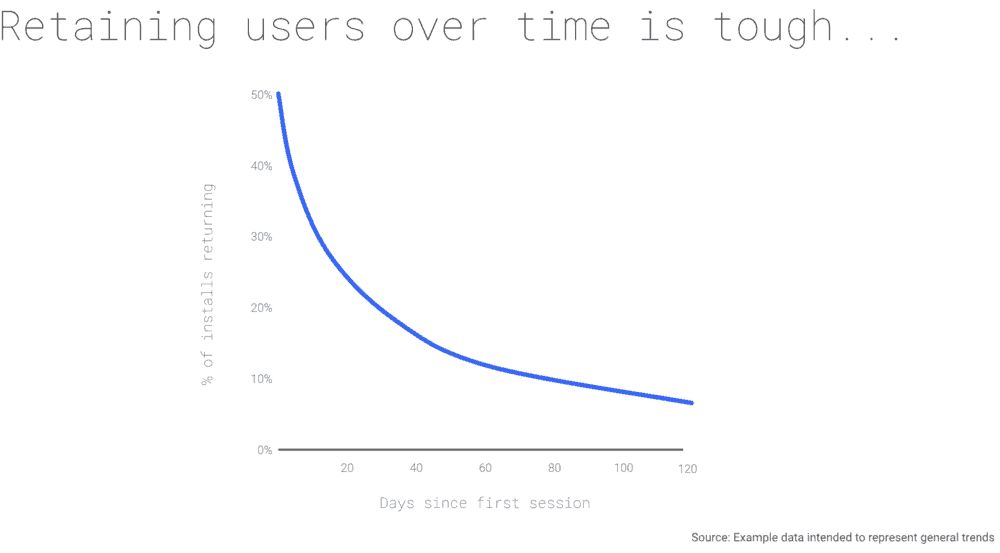
If we’re not sufficiently activated to experience the benefits of the app in the first session, we’ll likely churn and uninstall. Retaining users over the long-term is tough, but one of the best ways to mitigate this is to optimize the first session so that new users understand and take the core in-app behaviors fast.
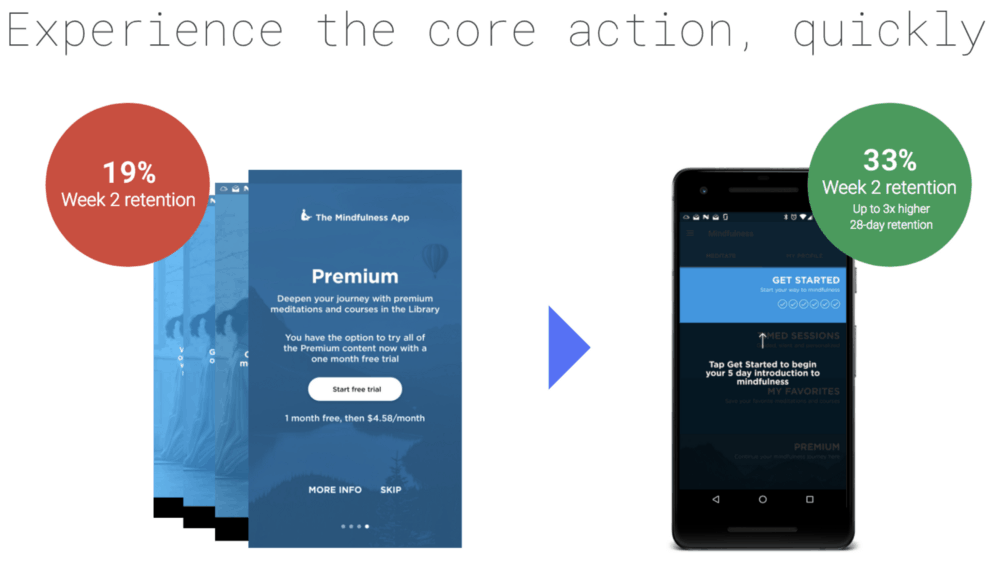
The Mindfulness app revamped their onboarding from several screens to a new flow that elevated the ‘core action’ of getting started with a meditation session. By implementing this Android material design ‘quickstart model’, week-2 retention increased from 19% to 33%. The takeaway? By increasing the likelihood of activating users on day one, your entire retention curve will shift up over time.
2. Plan for the next session
The first session is your best opportunity to ensure retention-driving triggers are set up. Without these, that first session won’t lead to a second and the likelihood of a behavior getting adopted is slim.
Let’s imagine someone installs a language learning app because they really want to learn French. They are far more likely to actually learn French if they willingly set a plan of how/where/when they will carry out the behaviors that help achieve this goal. There are dozens of studies citing that planning the how/where/when of a desired behavior, an implementation intention, makes it more likely that people will take action.
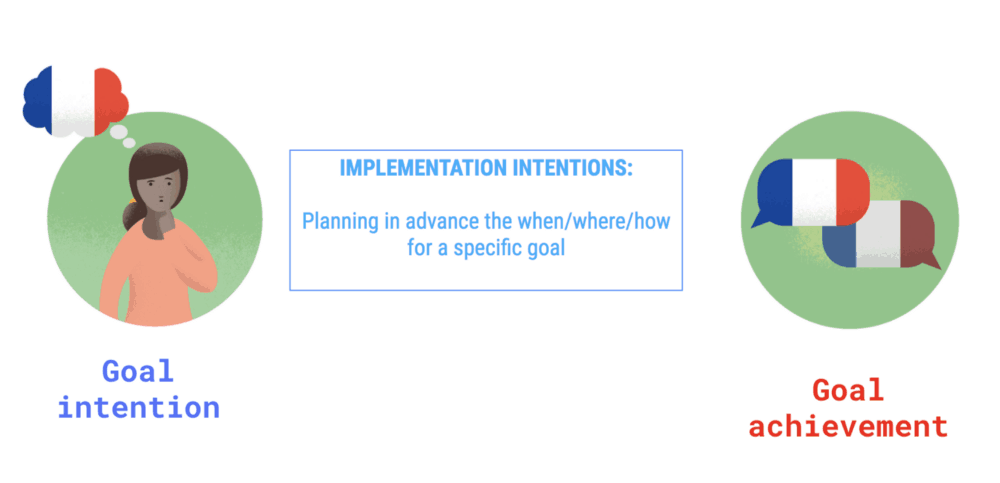
The Healthy habits app The Fabulous has taken on board this growing body of behavioral science research and implemented a Commitment Contract feature accordingly. People are asked tofill in a commitment contract where they indicate exactly when and where they will accomplish the desired action, for example taking a walking meeting to exercise more during the day. And in one specific study about implementation intention, people who filled in the contract were 20% more likely to follow-up on their plan.
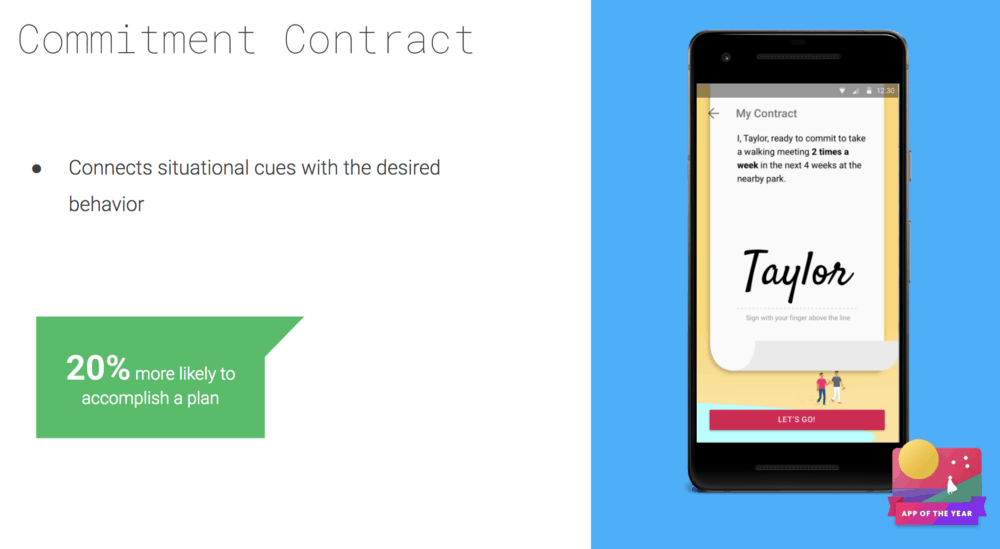
Another powerful technique is toencourage new users to set up a daily reminder so that they actually use the app a second time; at a time/day of their choosing. Push notifications that have been directly set by people at times that work for them work better than generic marketing prompts because they’re aligned with our own self-selected intentions. Live class app Yogaia tested the implementation of a new Daily Reminder feature, and found that new sign-ups who activated the daily reminder feature were 48% more likely to attend a class within the 1st week!
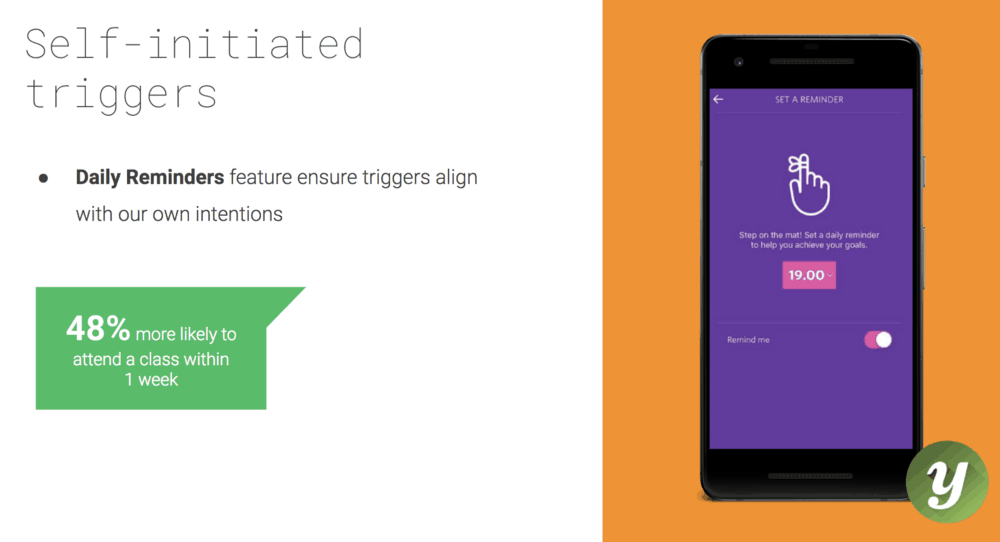
Going beyond a specific time of day, there’s a wealth of smartphone data that can equip developers with true user awareness by taking into account a wealth of other data points. Developers can tap into services such as Neura’s AI software to transform smartphone data into insights about user activities in the physical world.
Neura’s AI predicts when someone is likely to wake…
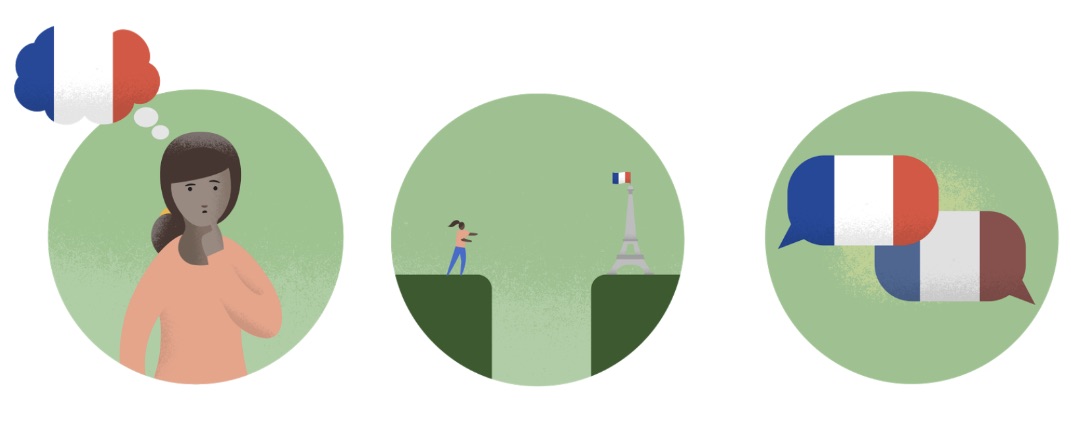
COMMENTS